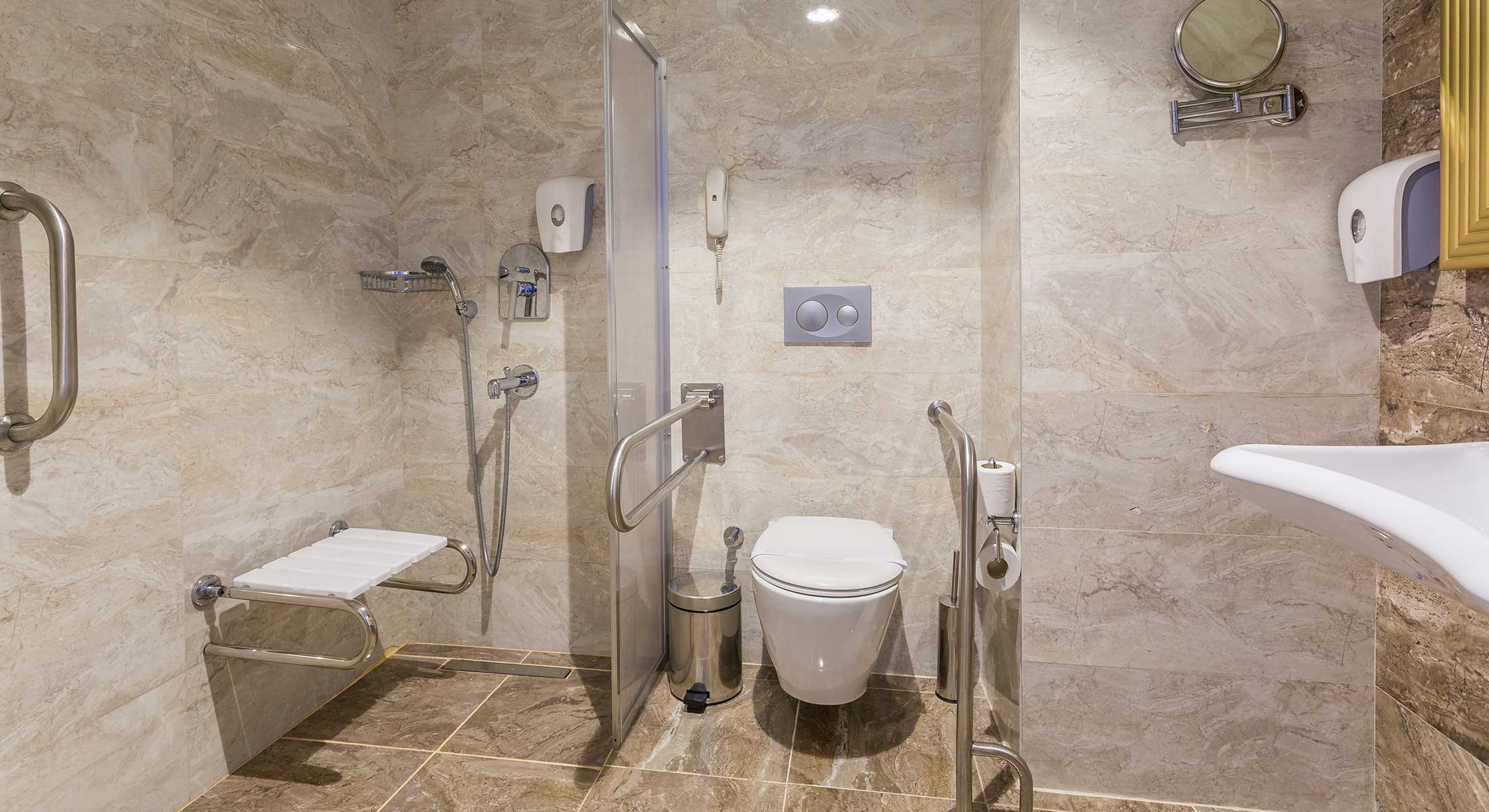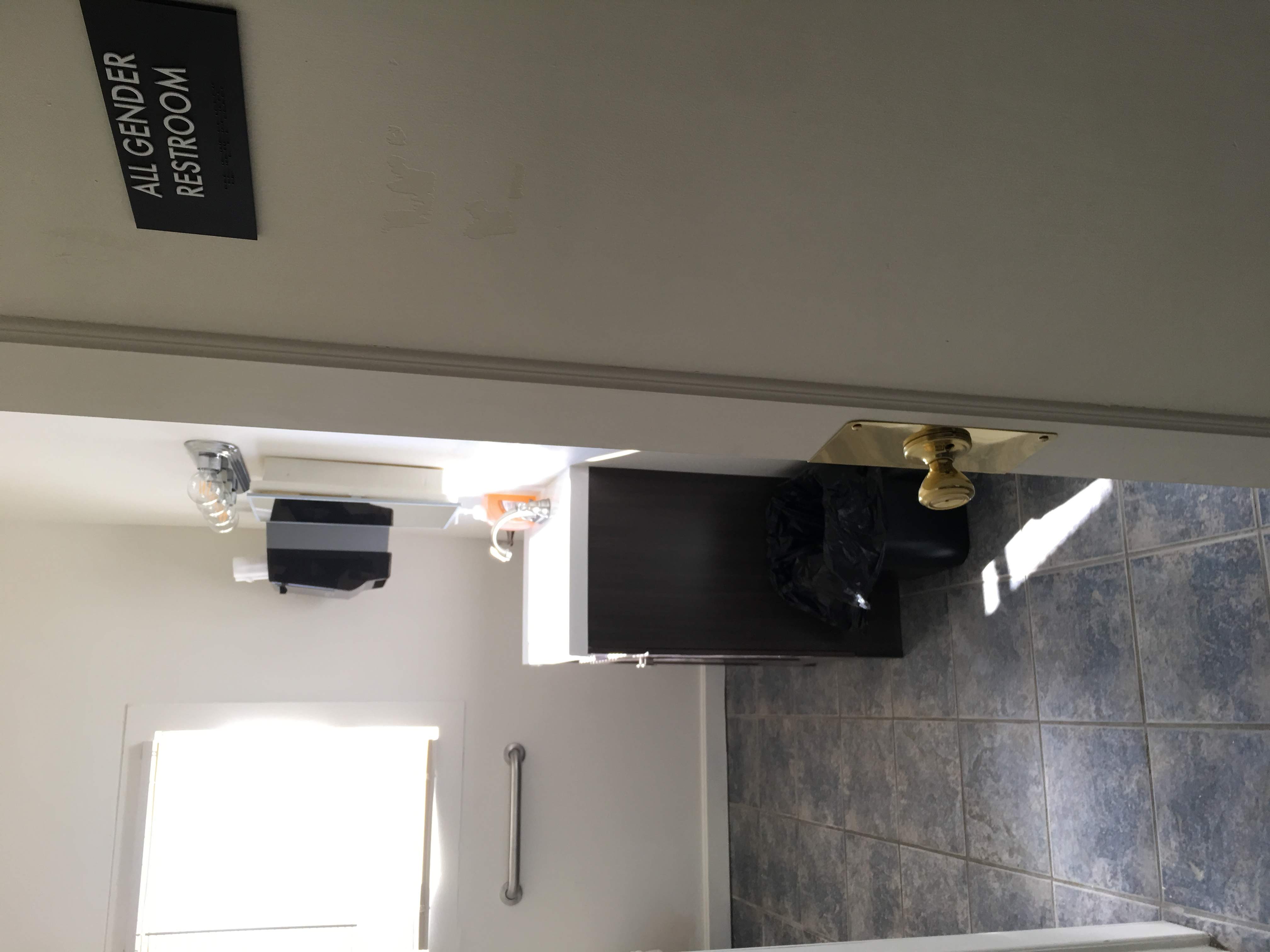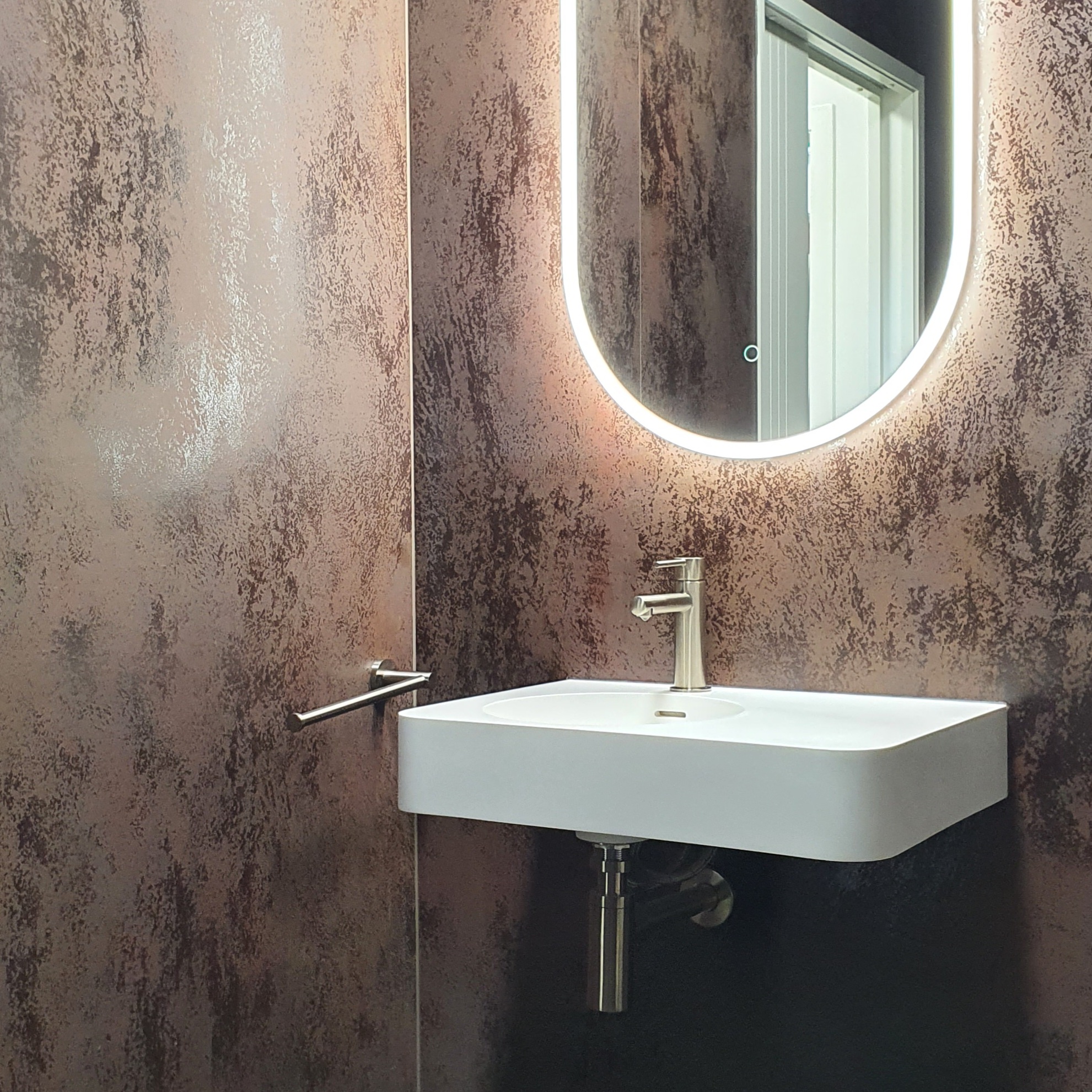Types of Bathroom Faucets for Disabled Individuals

Bathroom faucets designed for accessibility are crucial for promoting independence and ease of use for individuals with disabilities. These faucets are specifically engineered to cater to various physical limitations, offering features that enhance control, reduce strain, and provide a more comfortable experience.
Lever Handles
Lever handles are a popular choice for accessible bathroom faucets due to their ease of operation. They require less force and dexterity compared to traditional knob handles, making them suitable for individuals with limited hand strength or mobility.
- Example: Kohler Artifacts Lever Handle Bathroom Faucet – This faucet features a single lever handle that allows for smooth and effortless temperature and flow control with a simple push and pull motion.
- Advantages:
- Reduced grip strength required
- Easy to operate with one hand
- Suitable for individuals with arthritis or limited hand dexterity
Touchless Faucets
Touchless faucets, also known as sensor faucets, offer a hands-free experience, making them ideal for individuals with limited mobility or dexterity. These faucets use infrared sensors to detect hand movement, automatically turning the water on and off.
- Example: Delta Trinsic Touchless Bathroom Faucet – This faucet features a touchless activation system that allows users to control the water flow simply by waving their hand over the sensor.
- Advantages:
- Hands-free operation
- Eliminates the need for manual contact
- Reduces the spread of germs
Single-Handle Faucets
Single-handle faucets provide a convenient and efficient way to control both water temperature and flow with a single lever. These faucets are often preferred for their simplicity and ease of use.
- Example: Moen Brantford Single-Handle Bathroom Faucet – This faucet features a single lever handle that allows for precise control of both water temperature and flow with a simple up-and-down or side-to-side motion.
- Advantages:
- Simple and intuitive operation
- Requires minimal force to operate
- Suitable for individuals with limited hand strength or dexterity
Features for Enhanced Accessibility
Bathroom faucets designed for accessibility incorporate features that simplify use and enhance independence for individuals with mobility impairments, arthritis, or other disabilities. These features aim to make everyday tasks easier, safer, and more comfortable.
Lever Handles with Extended Reach
Lever handles offer a significant advantage over traditional knob-style faucets, particularly for individuals with limited hand strength or dexterity. They require less force to operate, making them easier to turn on and off. Extended reach levers, often found on faucets specifically designed for accessibility, allow users with limited reach to easily control the water flow. These handles are typically positioned at a lower height, making them more accessible for wheelchair users or those with difficulty bending down.
Touchless Activation, Bathroom faucets for disabled
Touchless faucets utilize infrared sensors to detect hand movement, activating the water flow without requiring physical contact. This feature is especially beneficial for individuals with limited hand mobility or who may find it difficult to manipulate traditional handles. Touchless activation eliminates the need to grasp or turn handles, allowing for effortless control of water flow. It also promotes hygiene by reducing the spread of germs through direct contact.
Adjustable Water Temperature Controls
Water temperature can be a significant safety concern for individuals with limited sensation or those who may be prone to scalding. Adjustable water temperature controls allow users to set a maximum temperature limit, preventing accidental scalding. These controls often feature a safety stop feature that prevents the water temperature from exceeding a pre-set limit. This feature is crucial for individuals with conditions such as arthritis or neuropathy, who may have difficulty regulating their body temperature.
Installation Considerations

Proper installation is crucial for ensuring that bathroom faucets designed for disabled individuals are both functional and accessible. This section provides guidelines on selecting the right height, reach, and location for optimal accessibility, as well as best practices for ensuring that the faucet is installed correctly and securely.
Faucet Height and Reach
The height of the faucet is a key factor in accessibility. A faucet that is too high or too low can make it difficult or impossible for individuals with limited mobility to use. The ideal height for a faucet should allow the user to comfortably reach and operate the handles without straining or reaching excessively.
- For seated users: The faucet should be positioned at a height that is easily reachable from a seated position, typically between 28 and 34 inches above the floor.
- For standing users: The faucet should be positioned at a height that is comfortable for standing users, typically between 34 and 40 inches above the floor.
The reach of the faucet is also important. The handles should be positioned so that they are easily accessible and operable by individuals with limited reach.
- Lever handles: Lever handles are generally easier to operate than traditional knob handles, as they require less force and can be turned with a single hand.
- Single-handle faucets: Single-handle faucets can be easier to operate than two-handle faucets, as they require only one hand to control both the water temperature and flow.
Faucet Location
The location of the faucet is equally important. The faucet should be positioned in a location that is easily accessible and provides adequate clearance for the user.
- Clearance: There should be at least 18 inches of clearance in front of the faucet to allow for wheelchair access.
- Side-mounted faucets: Side-mounted faucets can be more accessible for individuals who have difficulty reaching forward.
Installation Best Practices
- Professional Installation: It is highly recommended to have a qualified plumber install the faucet to ensure that it is installed correctly and securely.
- Secure Mounting: The faucet should be securely mounted to the sink or countertop using appropriate mounting hardware.
- Leak Testing: After installation, the faucet should be thoroughly tested for leaks.
- Accessibility Features: Ensure that any accessibility features, such as lever handles or touch-activated controls, are properly installed and functioning correctly.
Selecting the Right Faucet
Choosing the right faucet for a bathroom designed for disabled individuals requires careful consideration of the user’s needs and the specific requirements of the space. Factors to consider include:
- Accessibility Features: Look for faucets with accessibility features such as lever handles, touch-activated controls, or single-handle designs.
- Ease of Operation: The faucet should be easy to operate, with smooth, responsive controls.
- Durability: Choose a faucet that is made from durable materials and is designed to withstand frequent use.
- Style and Aesthetics: While accessibility is paramount, it is also important to consider the overall style and aesthetics of the bathroom. Choose a faucet that complements the design of the space.
Safety and Comfort Considerations: Bathroom Faucets For Disabled
Safety and comfort are paramount in bathroom design, especially for individuals with disabilities. Bathroom faucets play a crucial role in this, as they directly impact user experience and potential risks. This section explores key safety and comfort features that enhance accessibility and create a safer, more comfortable bathroom environment.
Safety and Comfort Features for Bathroom Faucets
Safety and comfort features are essential for ensuring a positive bathroom experience for disabled individuals. These features contribute to a safe and comfortable environment by minimizing risks, promoting independence, and enhancing ease of use.
| Feature | Description | Benefits |
|---|---|---|
| Water Temperature Controls | Lever handles, push buttons, or electronic controls provide easy and precise temperature adjustments. | Reduced risk of burns, enhanced control over water temperature, and improved comfort. |
| Anti-Scald Devices | These devices limit the maximum water temperature, preventing accidental scalding. | Protection against burns, increased safety for individuals with sensory impairments, and peace of mind. |
| Easy-to-Clean Surfaces | Smooth, non-porous surfaces resist dirt and bacteria accumulation, simplifying cleaning and maintenance. | Reduced risk of infections, improved hygiene, and a cleaner, more sanitary bathroom environment. |
| Durable Materials | High-quality materials like stainless steel or brass ensure long-lasting performance and resistance to corrosion. | Reduced maintenance costs, increased longevity of the faucet, and a reliable and dependable bathroom fixture. |
Regulations and Standards

Ensuring accessibility in bathroom design is crucial for individuals with disabilities, and this includes the selection and installation of bathroom faucets. Several building codes and accessibility standards guide the design and implementation of accessible bathroom facilities, focusing on the safe and comfortable use of fixtures for all users. These regulations are vital for creating inclusive environments that promote independence and dignity for individuals with disabilities.
Accessibility Standards
Accessibility standards specify the minimum requirements for the design and construction of accessible facilities, including bathroom fixtures. These standards ensure that facilities are usable by individuals with disabilities. Key requirements for bathroom faucets under accessibility standards include:
- Reach: Faucets must be positioned within reach of individuals using wheelchairs or other mobility aids. This typically requires the faucet spout to be between 15 and 48 inches from the floor, allowing for easy access without excessive strain.
- Height: The faucet handles should be positioned at a height that is comfortable for individuals with different heights and mobility needs. This is typically between 28 and 34 inches from the floor, ensuring that users can easily manipulate the handles without needing to reach too high or low.
- Functionality: Faucets should be designed with easy-to-use controls that are compatible with various assistive devices, such as lever handles, push buttons, or voice-activated controls. The design should also minimize the force required to operate the faucet, allowing individuals with limited dexterity to control water flow effortlessly.
Building Codes
Building codes are legal requirements that specify the minimum standards for construction and safety in buildings. These codes often incorporate accessibility standards, ensuring that new construction and renovations comply with accessibility guidelines. Building codes typically include requirements for bathroom fixtures, including faucets, to meet specific accessibility standards.
- ADA (Americans with Disabilities Act): The ADA is a comprehensive civil rights law that prohibits discrimination against individuals with disabilities in various settings, including public accommodations. The ADA Standards for Accessible Design (ADAAG) specify detailed requirements for bathroom fixtures, including faucets, ensuring they are accessible to individuals with disabilities. The ADAAG specifies reach, height, and functionality requirements for bathroom faucets, ensuring they are accessible to individuals with disabilities. The ADAAG also requires that faucets be operable with one hand and do not require tight grasping, pinching, or twisting of the wrist.
- IBC (International Building Code): The IBC is a model building code widely adopted across the United States and Canada. It incorporates accessibility requirements based on the ADAAG, ensuring that new construction and renovations comply with accessibility standards. The IBC includes provisions for bathroom fixtures, including faucets, to meet the requirements for accessibility. The IBC requires that bathroom faucets be accessible to individuals with disabilities and meet the specifications of the ADAAG.
Resources for Accessing Regulations and Standards
Various resources are available to access building codes and accessibility standards, providing guidance on designing and constructing accessible bathroom facilities. These resources can help architects, designers, builders, and homeowners understand the requirements for compliant bathroom fixtures, including faucets.
- The U.S. Department of Justice (DOJ): The DOJ website provides information on the ADA and its standards for accessible design, including the ADAAG. The website offers a comprehensive guide to accessibility requirements for bathroom fixtures, including faucets, ensuring compliance with the ADA.
- The International Code Council (ICC): The ICC is a non-profit organization that develops and maintains the IBC. The ICC website provides access to the latest edition of the IBC, including the accessibility requirements for bathroom fixtures. The website also offers resources for interpreting and applying the code, ensuring that projects meet the minimum standards for accessibility.
- State and Local Building Departments: State and local building departments often have specific regulations and guidelines for accessibility in building construction. These departments can provide information on the specific requirements for bathroom fixtures, including faucets, in their jurisdiction. They also offer resources for obtaining permits and inspections, ensuring that projects comply with local codes and standards.
Choosing the Right Faucet
Selecting the right bathroom faucet for a disabled individual involves careful consideration of various factors to ensure optimal accessibility, comfort, and functionality. This process requires a comprehensive approach that takes into account the specific needs and preferences of the user.
Factors to Consider
When choosing a bathroom faucet for a disabled individual, it is essential to consider the following factors:
- Type of Disability: Understanding the nature and extent of the disability is crucial. For example, a person with limited hand mobility might require a lever handle faucet, while someone with limited reach may benefit from a touchless faucet.
- User Preferences: Personal preferences regarding style, finish, and functionality should be taken into account. Some individuals might prefer a sleek and modern design, while others might prefer a more traditional aesthetic.
- Budget: Setting a realistic budget is essential. Faucets can range in price from a few hundred dollars to several thousand dollars, depending on the features and materials used.
- Bathroom Design: The overall design of the bathroom should be considered. A faucet that complements the existing fixtures and décor will create a cohesive and visually appealing space.
Recommendations for Specific Faucet Models
Based on the factors mentioned above, here are some recommendations for specific faucet models:
- Lever Handle Faucets: These faucets are ideal for individuals with limited hand strength or dexterity. They are easy to operate with a simple lever movement, reducing the need for forceful gripping.
- Touchless Faucets: These faucets are activated by motion sensors, making them suitable for individuals with limited hand mobility or dexterity. They can be operated with a simple wave of the hand, eliminating the need for physical contact.
- Single-Handle Faucets: These faucets offer a simple and convenient way to control both hot and cold water with a single lever. They are a good option for individuals with limited hand strength or dexterity.
- Gooseneck Spouts: These spouts provide ample clearance for individuals who use wheelchairs or have limited reach. They offer greater flexibility and ease of use.
Maintenance and Care
Regular maintenance is crucial to ensure your bathroom faucet for disabled individuals functions properly and lasts longer. Neglecting maintenance can lead to leaks, malfunctions, and potential safety hazards.
Cleaning and Maintenance Tips
Proper cleaning is essential to prevent the buildup of dirt, grime, and mineral deposits that can affect the faucet’s performance and lifespan.
- Regularly wipe down the faucet with a soft, damp cloth to remove any dust, fingerprints, or soap residue.
- Avoid abrasive cleaners as they can scratch the finish. Use a mild soap or a specialized cleaner recommended for the faucet’s material.
- Pay attention to the aerator, which can accumulate debris and affect water flow. Unscrew the aerator and soak it in a solution of vinegar and water for a few hours to remove mineral deposits.
- Clean the faucet’s handles, paying attention to the levers, knobs, or push buttons, to ensure they operate smoothly.
- Inspect the faucet for leaks, especially around the spout and handles. Tighten any loose connections or replace worn-out washers or O-rings.
Preventing Common Problems
- Regularly check the water pressure and adjust it as needed. High water pressure can put stress on the faucet’s components, leading to leaks or malfunctions.
- Avoid using harsh chemicals on the faucet as they can damage the finish and internal components.
- Don’t force the faucet handles if they feel stiff or difficult to operate. This could damage the internal mechanism. Instead, lubricate the handles with a silicone-based lubricant or contact a professional plumber for assistance.
